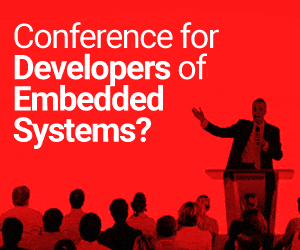
Q. What is the biggest challenge that the IoT/wearables’ revolution faces, which keeps it from doing what apps did almost half a decade ago?
A. The challenge is that it’s a physical plate. Compared to the prior paradigm where you were making an app for a device the consumer already had in his hand, here you need to get the actual physical device to the consumer. In essence, what we were doing was getting a laptop and a free SDK, creating an app and going through a digital marketplace to reach consumers. The consumers were already bearing the cost of buying the device and subscribing to operators, and the developers, in most cases, already had access to a laptop. Therefore the barriers were quite small. It was just about accessing a laptop, downloading an SDK, learning how to code. With IoT and wearables, there exists a physical aspect that needs to be understood.
Q. What would be the most important enabling tool that a developer can have in this situation?
A. It requires a broader skill set to develop both physical devices and digital apps—it is all being enabled by the emerging popularity of 3D printing, which provides more capabilities to developing locations around the world. In fact, consumers who used to buy very expensive laptops are now thinking about investing in 3D printers. These enable users to prototype and build things at home. Ten years ago developers had to overcome many barriers in the manufacturing world if they wanted to create a device; now all they have to do is write an app and create a physical model.
Q. Is there a method of classification in place for wearable devices?
A. The wearable segment consists of three tiers, starting with what we refer to as the single application tier, above which is the simple application tier, and at the top, the rich application tier. You can think of the traditional and existing fitness band category as being in the single tier. The second tier can have something like a companion-oriented smart watch or companion-style smart glass—a more specific example could be a fitness band with a user interface. A highly-evolved smart watch, or wearable device, would go into the rich application tier, like the Google Glass platform.
Q. What would be the secret ingredient for a successful smart watch that people would really want to wear?
A. Some factors that make a wearable a success are its cost, current drain, size and range. Most of the current smart watches are gigantic—ladies and fashion-conscious people might not wear such bulky smart watches. Hence, device size is definitely a factor. Some smart watches have to be charged every four to five days, and consumer behaviour does not support that. People want convenience and don’t want to take off their watches twice a week just to charge it. So the current drain is definitely another critical success factor, something that we are very aware of and actually doing something about.
Q. What can you tell us about the form factor for the Linklt kit, and what it means for a user?
A. The size is very small at 5.4×6.2×1 mm. As compared to one of those mini SIM cards, it is extremely small and flat, and can be accommodated in a very wide range of form factors, including weather glasses, slimmer watch designs and identity fitness bands. The design is also extremely energy-efficient. By reducing the amount of current consumed, it allows you to do a number of things. One is that you can design super-slim products. It has a very competitive charging profile, better energy characteristics and recharges last longer.
Q. What would you really like to see in a wearable device?
A. I would like to see some personal identity features for authorising commercial transactions built into it. I would like to see developers innovate around financial transactions, turning the gadget people wear on their wrist into a way to get on the subway or make simple payments. Every consumer deals with making payments. I would really like to see the users connected, updated, getting on the subway or bus, or paying for a taxi or even getting a cup of coffee using wearables. I think it’s a wonderful leap forward for the consumers.






